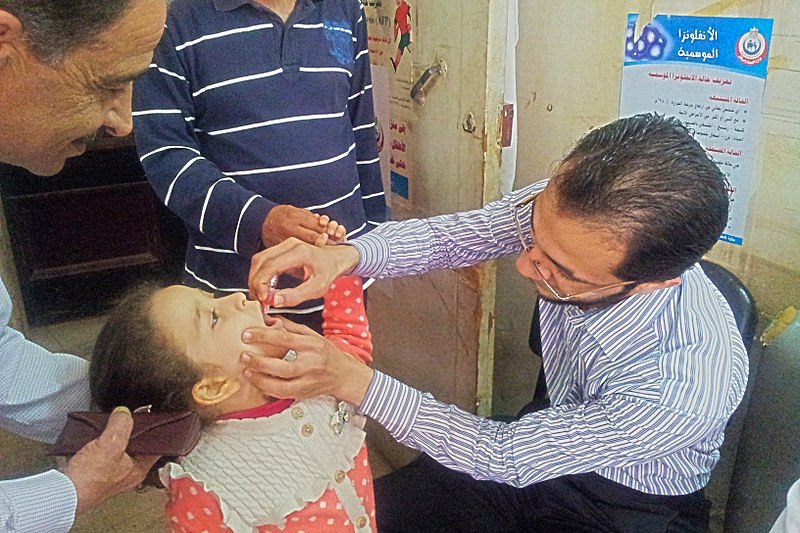
An estimated 1 in 6 people globally are affected by infertility, according to a new report from the World Health Organization, which emphasizes that the condition is common.
Rates of infertility – defined as not being able to conceive after a year of having unprotected sex – are similar across all countries and regions, Monday’s WHO report says.
“In our analysis, the global prevalence of lifetime infertility was 17.5%, translating into 1 out of every 6 people experiencing it in their lifetime,” Dr. Gitau Mburu, a scientist of fertility research at WHO, said Monday.
“Lifetime prevalence of infertility does not differ by income classification of countries,” he said. “Lifetime prevalence was 17.8% in high-income countries and 16.5% in low- and middle-income countries, which, again, was not a substantial or significant difference.”
Yet there are differences in how much people are spending on fertility treatments and how accessible such treatments are, according to the report.
“People in the poorest countries were found to spend a significantly larger proportion of their income on a single cycle of IVF or on fertility care compared with wealthier countries,” Mburu said, “exemplifying that this is an area with high-level risk of inequality in access to health care.”
Global public health groups typically call attention to overpopulation as a major public health concern, so the spotlight that the WHO report turns on infertility not only is surprising but is welcome, said Dr. David Keefe, reproductive endocrinologist and infertility specialist at the NYU Langone Fertility Center in New York.
“That report did not surprise me in terms of the content, because it’s been known for some time that infertility is much more prevalent than anyone wants to think about: Having a child and having a family is kind of a universal dream or aspiration for people from every country, from every region. What surprised me was the World Health Organization coming out in support of it,” said Keefe, who was not involved with the WHO research.
“It was a welcome acknowledgment of the other foot dropping on the population front,” he said. “The acknowledgment that this is a worldwide problem and that additional attention must be devoted to it in terms of policy and strategy is welcome.”
‘This is a worldwide problem’
The WHO report – described as the “first of its kind in a decade” – includes an analysis of infertility data from 1990 through 2021. The data came from 133 previously published studies on infertility prevalence.
“The purpose of this analysis was to generate updated data on the global and regional estimates of infertility prevalence by analyzing all available data from different countries, making sure that we take into account different study approaches,” Mburu said.
Based on that data, the researchers estimate that lifetime prevalence of infertility – representing the proportion of people who have ever experienced infertility in their reproductive life – was 17.5% in 2022.
The period prevalence of infertility, meaning the proportion of people with infertility at any given point currently or in the past, was found to be 12.6% in 2022.
Although the data showed some variation in infertility prevalence across regions – with the highest lifetime prevalence at 23.2% in the Western Pacific, compared with the lowest at 10.7% in the Eastern Mediterranean – those regional differences were not either substantial or conclusive based on the data, according to WHO’s report.
The researchers also did not determine whether global infertility rates have been increasing or decreasing over time.
“The data which we analyzed for this report was from 1990 to 2021, and during that period, we did not see evidence of increasing rates of infertility. However, the way the data was arranged, it was not really organized to answer that question,” Dr. James Kiarie, head of contraception and fertility care at WHO, said Monday. “We cannot, based on the data we have, say that infertility is increasing or constant – so we must say that probably the jury is still out on that question.”
Over time, various factors can affect a person’s fertility, and age is one of the most important, said Dr. Emre Seli, chief scientific officer for the maternal and infant health nonprofit March of Dimes. Seli, who is also a professor at Yale School of Medicine and medical director of Yale Fertility Center, was not involved in the new report.
“Fertility decreases as the age of the female partner increases,” he said.
“Fertility is really an emotionally taxing issue for those who are affected by it. It is a major source of stress to want to have a child and not be able to,” Seli said. “Most of my patients are women, and they do become affected by this at many levels, and they do suffer from lack of adequate research as well as lack of adequate insurance coverage to undergo the treatments that they need.”
‘An important public health concern’
Infertility, affecting the male or female reproductive system, can be treated with medicine, surgery or assisted reproductive technologies such as in vitro fertilization or IVF, during which an egg and sperm are joined in a lab dish and put into a womb once the fertilized egg becomes an embryo.
“Infertility is a major and a widespread health issue affecting a staggering 1 in 6 people globally over the duration of their reproductive lives,” Dr. Pascale Allotey, director of the Sexual and Reproductive Health and Research Department at WHO, said Monday.
Despite that, solutions for the prevention, diagnosis and treatment of infertility remain “underfunded” and “inaccessible” to many patients due to high costs, Allotey said.
“Infertility is an important public health concern because it can have wide-reaching negative impacts on the lives of the people affected,” she said. “WHO is calling for universal access to affordable high-quality fertility care, improved data to enable infertility to be meaningfully addressed in health policy and programs, and greater efforts to ensure this issue is no longer sidelined in health research and policy.”
Mburu added that infertility can also have effects on mental health, raising risks of anxiety, depression and intimate partner violence.
“Our message is that infertility needs to be included as a priority in responding to the needs of populations in different countries,” Mburu said. “This is because people have a right to expect to obtain the highest possible standard of mental, social and physical health as defined by WHO.”
The new data from WHO reinforces that more people need fertility coverage and access to high-quality care than was previously thought, said Dr. Asima Ahmad, an endocrinologist and fertility expert who serves as chief medical officer and co-founder of Carrot Fertility, a company that helps employers set up fertility benefits. She added that inequities emerge in who has such access to care, such as Black women who tend to experience inequities in access.
“These inequities, I’m not surprised that they exist on a global level, because we already see the inequities in the United States domestically, with how infertility impacts different populations and how some populations have limited access. And even with the access that they finally get, they, for example, will have a lower rate of success or even a higher rate of miscarriage,” said Ahmad, who was not involved in the new WHO report.
“A lot of people don’t have access to clinically vetted evidence-based information around what causes infertility, how to recognize it, and then when you do find out that you have it, how to treat it,” she said. “The other, which is one of the biggest barriers that we see, is financial access to fertility. In the United States, a lot of that access comes through the employer providing, for example, fertility benefits, but on a global level, that’s not necessarily the case, and finances tends to be the biggest barrier.”




